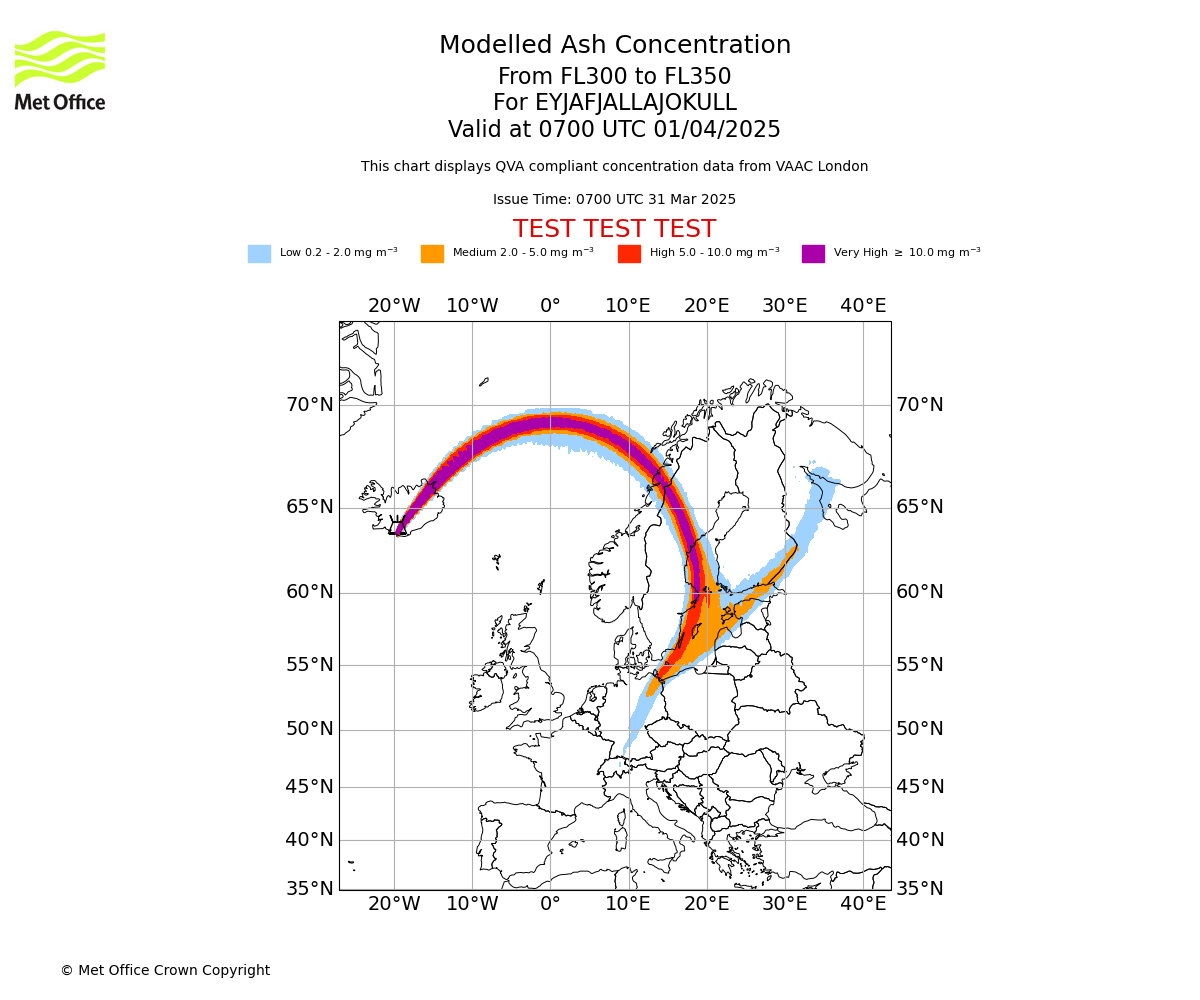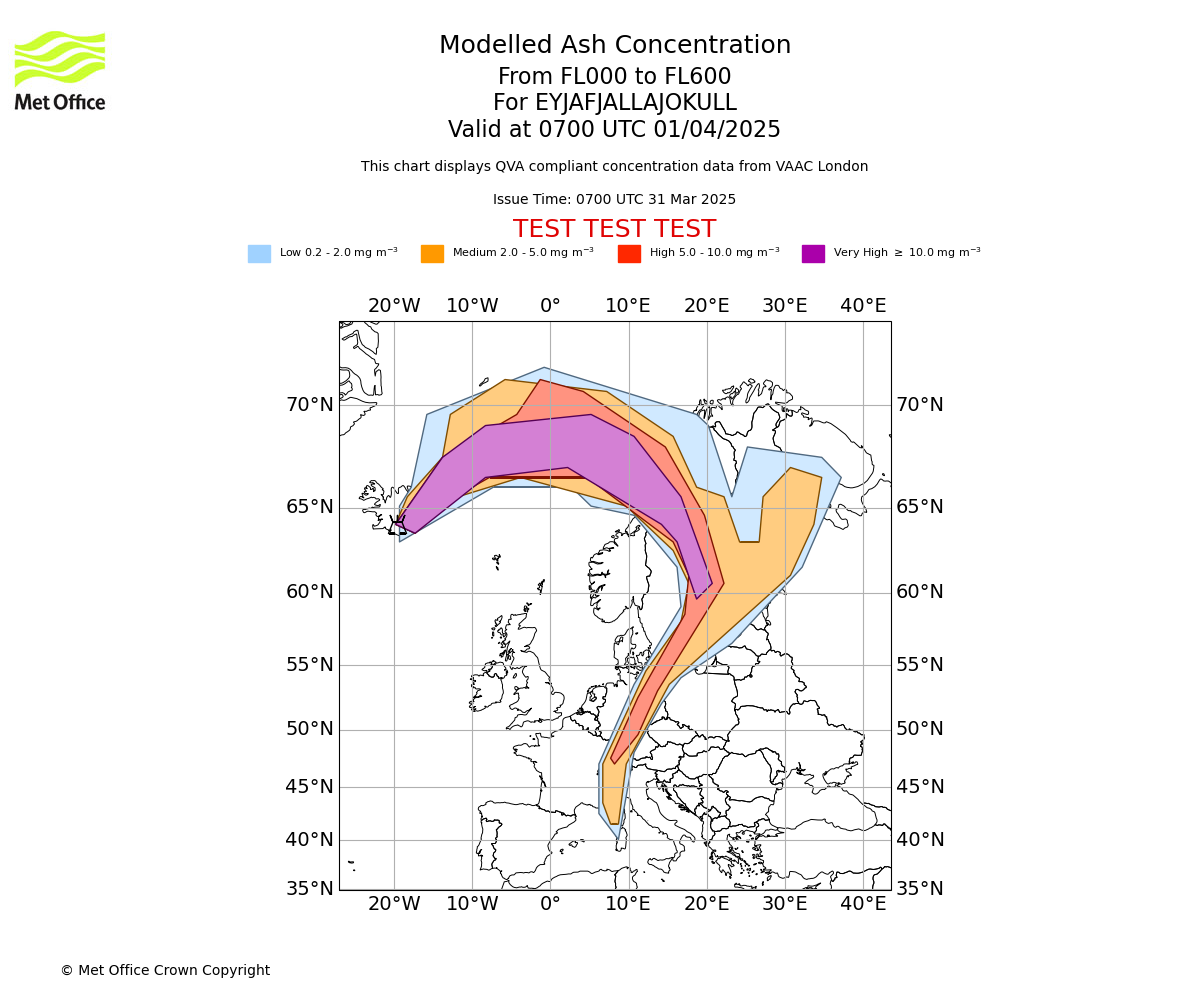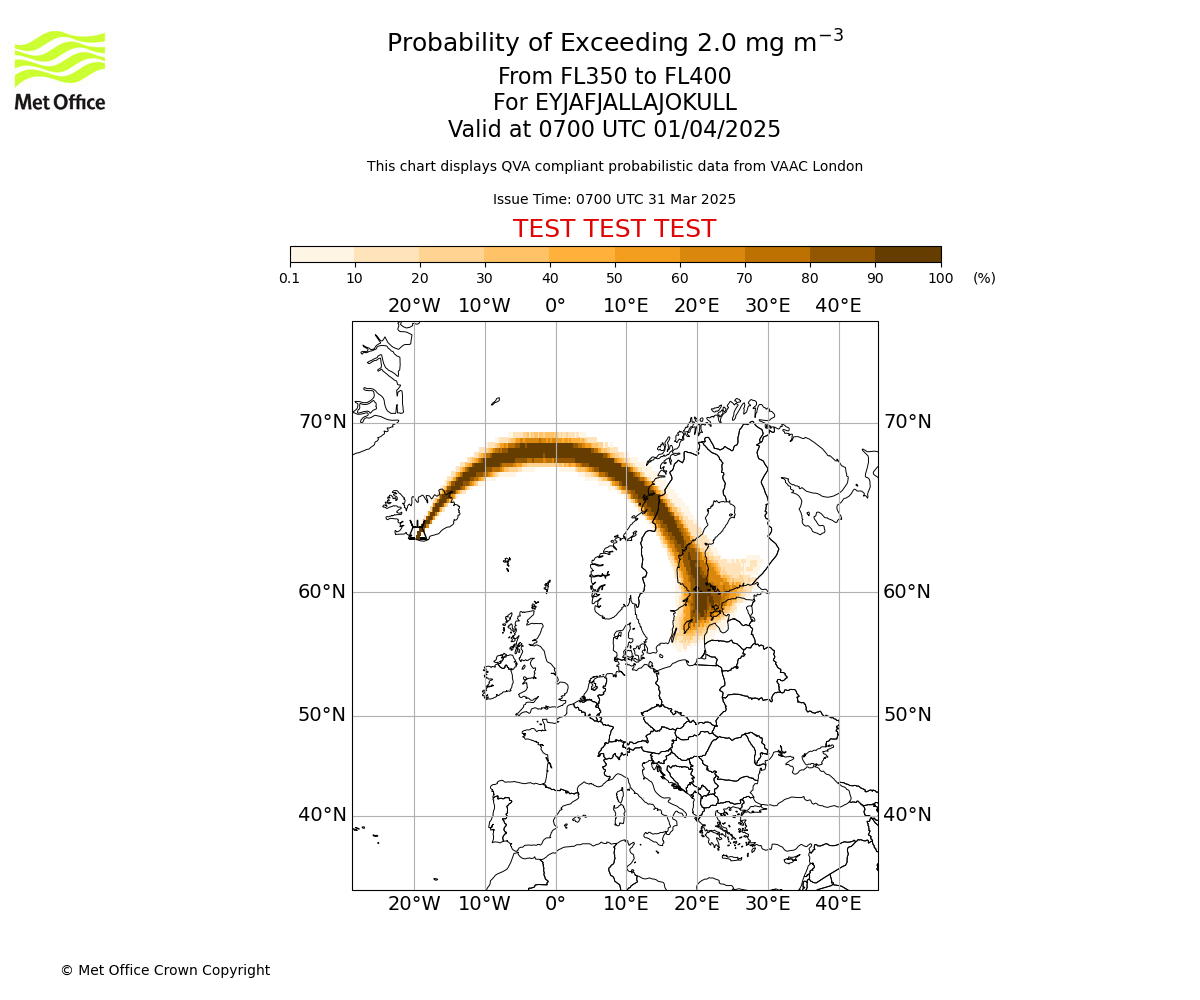Quantitative Volcanic Ash (QVA) Forecasts
Quantitative Volcanic Ash (QVA) forecasting provides higher-resolution ash location information than traditional Volcanic Ash Advisory (VAA) bulletins.
Quantitative Volcanic Ash (QVA) forecasts provides higher resolution ash location information compared to traditional Volcanic Ash Advisory (VAA) products. Unlike the VAA, QVA forecasts include ash concentration information and quantitative guidance on the uncertainties in The Volcanic Ash Advisory Centres (VAACs) guidance.
QVA forecasts enable aviation operators to use certified engine susceptibility volcanic ash exposure thresholds for risk assessment-based flight planning and inflight replanning, together with considerations of safety and optimisation of flight routing. In contrast, the VAA depicts only the loosely defined ‘discernible ash’ boundaries, referring to all ash that can or could be detected by remote sensing and in-situ monitoring capabilities.
VAACs will introduce QVA forecasts in November 2025, although VAAC London, hosted and run by the Met Office, will be offering this service from July 2025.
QVA consists of three core data sets:
-
Expected Ash Concentration: A gridded dataset providing specific 3-dimensional ash concentration location details.
-
Probability of Ash Exceedance: A dataset indicating the likelihood of ash exceeding key concentration thresholds (0.2mg/m³, 2mg/m³, 5mg/m³, and 10mg/m³).
-
Feature Objects (IWXXM Format): Representations of areas where ash exceeds concentration thresholds at various flight levels.
QVA information complies with thresholds and ranges formulated by ICAO’s Meteorology Panel and International Coordinating Council of Aerospace Industries Associations (ICCAIA).

-
Forecasts cover altitudes up to 60,000ft (FL600) across twelve vertical layers (each 5,000ft deep).
-
Data spans from T+0 to T+24 hours, updated every 6 hours at 3-hour intervals during episodes of significant ash in the atmosphere.
QVA Concentration Forecast:
Displays data for one output time step and one flight level (e.g., FL150-FL200). The chart title describes the plotted data, while the subtitle includes flight level range, volcano name, and validity time. The issue time shows when the chart was issued, distinguishing it as a forecast. If not marked as TEST or EXERCISE, the chart is for a real eruption.

IWXXM Polygon:
Depicts the expected ash cloud location at a specific timestep and flight level across four QVA concentration thresholds. These 3D prism-like polygons are generated from a 2D field of maximum concentrations across all QVA vertical levels.

QVA Probabilistic Forecast:
Illustrates the probability of exceeding the lowest concentration threshold for a given timestamp and flight level, reflecting forecast confidence based on predicted weather scenarios.

A probability of 100% means that every weather scenario results in a forecast which predicts that the ash concentration will exceed the prescribed threshold, and a 50% probability means that half of the scenarios predict that the concentration threshold will be exceeded.
Forecasting Methodology
London VAAC uses the NAME (Numerical Atmospheric-dispersion Modelling Environment) model, driven by 3D time-evolving meteorological fields from the Unified Model (NWP). This incorporates:
-
Eruption Source Parameters (ESPs): Ash release location, height, amount, ash properties and timing.
-
Observational Data: Satellite, LIDAR and other observation data and imagery
-
Data-fusion: combining observations and NAME to refine forecasts.
-
Ensemble Meteorology: The MOGREPS-G ensemble (18-member system) to represent forecast uncertainties.
How do I access the QVA data?
- The QVA data is available to aviation users via an API service. Click here to find out more or see below
- Charts will be published when an eruption is taking place. Click here to find out more or see below
Get in touch
Call us
We are available 24/7.
0370 900 0100Email us
Fill out this short form and we'll get back to you.
Contact Us formFollow us
Linkedin XGet in touch
Call us
We are available 24/7.
0370 900 0100Email us
Fill out this short form and we'll get back to you.
Contact Us form

